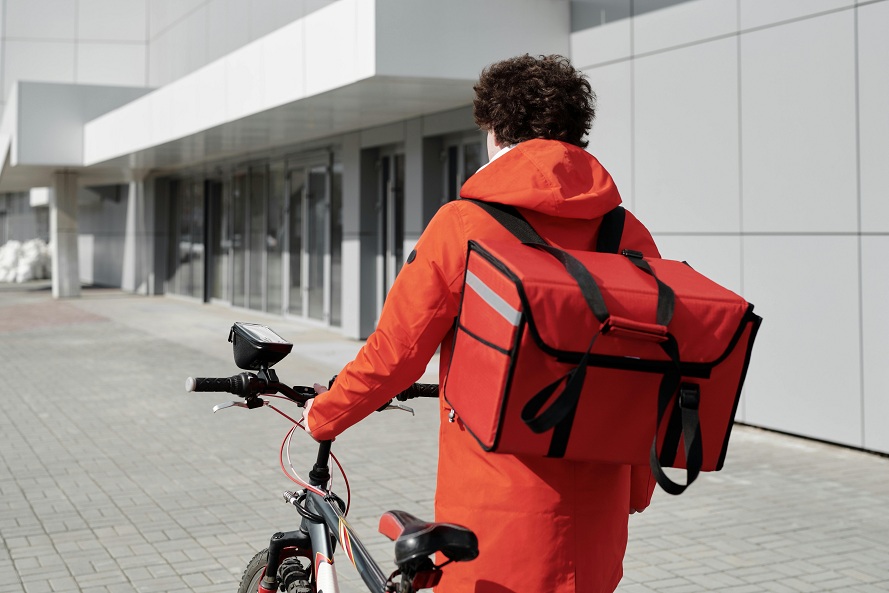Image: https://www.pexels.com/photo/a-man-carrying-thermal-bag-while-walking-4392040/
Gig apps like Uber, DoorDash, and Instacart have made everyday tasks easier. You can get a ride, order food, or even book a cleaner with just a few taps on your phone.
But what you don’t always see are the problems behind the scenes. Many people using these apps think they’re just using a helpful tool. However, there’s a lot of stuff the companies behind them don’t talk about.
From safety risks to unfair worker treatment, there’s more going on than meets the eye. Here’s what you should know before you open your favorite gig app again.
What the Platforms Don’t Tell You
Gig apps are built for speed and simplicity. However, the rush to serve millions of users comes at the cost of safety and fairness.
A 2025 Human Rights Watch report exposed how these platforms use algorithms to pressure workers into accepting low-paying jobs. Automated systems dictate pay, assign tasks, and penalize those who decline too many requests, even deactivating accounts without clear explanations.
Many workers report being locked out of their accounts due to vague or incorrect policy enforcement, with little ability to appeal. This system, built to optimize profits, frequently leaves workers with unstable earnings and no real recourse. Alongside financial instability, safety concerns have also escalated.
Uber, for example, has come under fire for failing to address recurring assault incidents. According to TorHoerman Law, the Uber sexual assault MDL recorded its largest monthly surge in 2025. The number of cases jumped from 2,175 in June to nearly 2,360 cases in July. Plaintiffs allege the company didn’t implement adequate safety measures, such as stronger background checks or better incident response.
In such cases, legal experts, such as an Uber sexual assault lawyer, may help expose these failures. Their efforts can drive accountability not just through financial settlements but by forcing changes to how platforms safeguard their users. And beyond safety, there are financial pitfalls that users and workers rarely see coming.
Hidden Fees, Dark Algorithms, and Exploited Workers
You might think your ride or delivery only costs what you see on your screen. But the real price is often much higher, and not just for you. In January, the Federal Trade Commission and New York’s attorney general accused Handy of luring workers with inflated pay claims.
According to TechCrunch, the complaint against Handy also alleges that Handy hid complex fees and unfair fines. Many workers were charged penalties even when bugs in the app caused scheduling issues. Some had to wait over a week to get paid or meet strict conditions just to access faster payouts.
The company offered to settle but refused to admit fault. This kind of misleading pricing is common across gig platforms. Most of them use complex fee structures and algorithms that aren’t fully explained. That means both users and workers typically don’t know what they’re getting.
Surge pricing is another problem. Prices go up when demand is high, but the rules behind those surges are often unclear. As a user, you may pay more for a ride without understanding why. And workers might not earn more, even when prices rise.
Gig Work Isn’t a Side Hustle Anymore; It’s a Struggling Economy
Many people still think of gig work as a side hustle. But for a large portion of workers, it’s their main job. A 2023 University of Chicago research tracked earnings through tax filings to calculate the number of new gig workers and found shocking results.
Over the study duration, new worker growth increased by 150%, with 3 million new workers joining the workforce. Between January 2017 and January 2021, the number of new workers rose from 1.4 million to 4.9 million. Many drive, deliver, or complete app-based tasks full-time because they don’t have better-paying options.
As inflation rises and traditional job wages remain stagnant, people turn to platforms like Uber or DoorDash not for extra cash but to survive. But the reality is harsh. Even full-time hours don’t guarantee stability.
After gas, repairs, and platform fees, many workers barely take home the minimum wage. Some skip meals or postpone healthcare to keep going. Others juggle multiple apps at once just to make enough in a day.
These aren’t isolated cases. They’re signs of a deeper economic strain. The gig economy is not a fix. It’s a symptom of bigger issues: fewer stable jobs, rising living costs, and a system that shifts risk onto workers instead of protecting them.
Safety Isn’t a Given; It’s a Gamble
Gig apps are growing fast in many cities. But more users and workers mean more chances for problems. A 2024 Axios report reveals that Washington, D.C., now has the nation’s highest share of app-based workers. Nearly 1 in 10 people in the capital rely on apps like DoorDash or Uber to earn.
States like Florida, Nevada, and Georgia aren’t far behind, showing how deeply gig work has become embedded in local economies. In these places, the demand is so high that companies often rush to hire more drivers or workers, sometimes without doing full background checks. That’s risky.
When platforms prioritize meeting demand over screening candidates, it jeopardizes your safety. Some new apps are trying to change this. For example, Business Insider reveals that tools like GigU and Mystro help drivers plan safer, more efficient trips. But while they claim to boost driver safety and earnings, Uber and Lyft have pushed back.
The ridesharing giants accuse the drivers using these tools of violating terms of service and threaten them with account suspensions. Many of these gig apps are still self-regulated, meaning there’s no independent watchdog monitoring safety or complaint processing. That means the responsibility falls on users to stay alert, and that’s not fair.
Gig apps offer a lot of convenience. However, this ease comes at the cost of safety, fairness, and transparency. With millions relying on these apps daily, the stakes have never been higher. That’s why it’s important to ask tough questions about safety, fairness, and the future of work.
Commonly Asked Questions
1. Do gig workers get employee benefits like health insurance or paid time off?
Generally, no. Most gig workers are classified as independent contractors, not employees. This means they typically do not receive traditional benefits like health insurance, paid vacation, sick leave, or unemployment benefits. They are responsible for their taxes and expenses, which can significantly impact their net earnings.
2. How does insurance typically work for gig workers if they have an accident on the job?
Gig workers often face unique insurance challenges. Their personal car insurance might not cover accidents while working for an app. Some platforms offer limited occupational accident insurance during active assignments, but it’s usually not comprehensive. Workers need to purchase specific commercial or rideshare insurance to be fully protected.
3. Why is surge pricing on gig platforms controversial?
Surge pricing is meant to reward workers during high demand, but the reality is more complex. Riders routinely pay more without knowing why, and workers don’t always see that extra money. Since the algorithm controls everything, transparency is nearly impossible for either side.
You deserve to know what’s happening behind the apps you use every day. By understanding the risks, recognizing your rights, and holding these companies to higher standards, you can help push for better protections. The next time you open a gig app, don’t just think about what you’re gaining. Think about what others might be losing.

